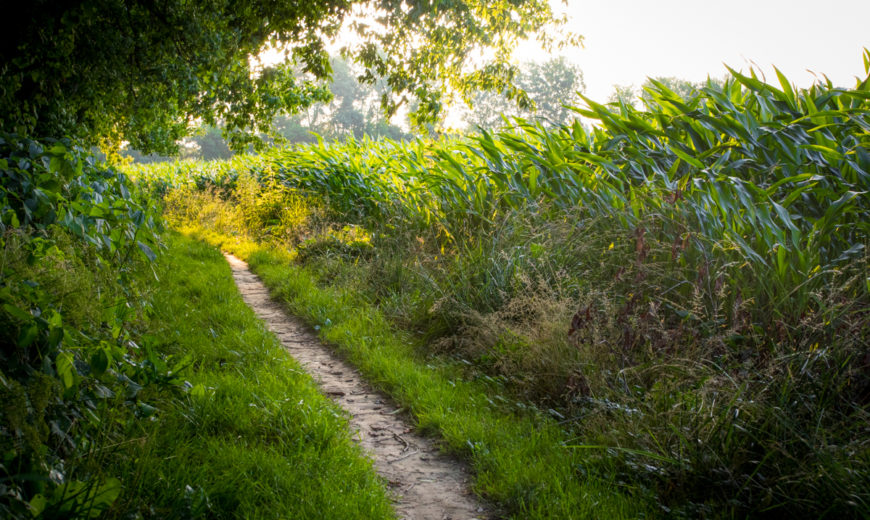Burlington Commits to Unifying Natural Areas

By: Sean Beckett
What do the intervale marshes, the Arms Forest, the bluffs of Ethan Allen Park, and Centennial Woods all have in common? Not a whole lot, it turns out. But that is about to change, thanks to a June 5th resolution passed unanimously by city council entitled Burlington’s Trails & Natural Land Conservation Initiative. Spearheaded by members of Burlington’s Conservation Board and sponsored by city councilors Richard Deane and Joan Shannon, the resolution aims to “achieve lasting conservation and connection of Burlington’s wild and natural areas.”
Imagine your neighborhood coyote on a dawn hunt through some of Burlington’s 3,300 acres of open space. Her commute from the Burlington College bluffs over to the Intervale farm fields threads together a forested route of wild lands owned and managed by a multitude of stakeholders. Her two-mile adventure is underwritten, to name just a few, by the Winooski Valley Park District, Burlington High School, the Episcopal Diocese, Burlington Parks, Recreation & Waterfront, the Elk’s Club, and Vermont Fish and Wildlife. Mountain bikers, dog walkers, and birdwatchers encounter this same checkerboard of ownership while traveling through Burlington’s natural areas.
With this open space ownership medley comes the challenge of unifying conservation and management priorities across the 49% of Burlington’s land area designated as Open Space. For instance, stewardship plans in one forest may be counterproductive to the goals of another, or different owners may unintentionally compete for the same conservation funding. Some publicly accessible properties are virtually unknown among Burlingtonians, while overuse at others damages the sensitive natural heritage for which they were originally conserved.
The June 5th resolution looks to address these problems by working toward a “shared commitment to the conservation needs in the city,” and making a plan for “collective and collaborative stewardship of our network of natural areas.” The initiative hopes to facelift Burlington’s collection of wild spaces into a unified system of natural areas featuring sustainable trail networks, consistent signage, official maps, and cooperative management. Such commitment to urban open space connectivity places Burlington among nationally renowned analogs like Boston’s Emerald Necklace and Philadelphia’s Circuit Trails.
While the particulars of this vision will be the collaborative output of key stakeholders in the coming months, the guiding principle is straightforward. Zoe Richards, conservation board member and originator of the initiative, explains that the plan is, at its heart, “to lead with conservation.”
